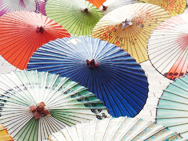Knowing his metals
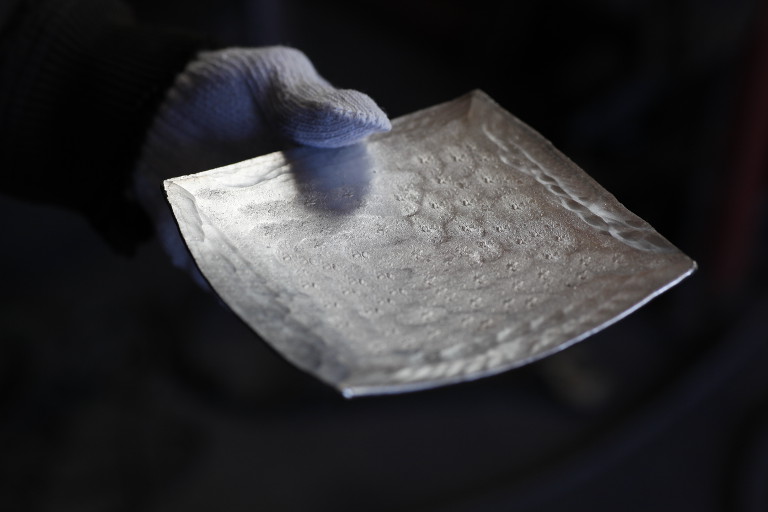
Along with Hata Shunsai III in Takaoka, Toyama prefecture, Jun Tanaka is one of Japan’s foremost young metal artists. Though his principal focus is on ironwork, Tanaka crafts a range of metalware, from interior items to exterior building fixtures. His forged ironwork has a warm texture attained by repeated hammering, and shows the dark-gray color of iron to its best advantage.
His vases are a beautiful example of this. Their curves have a delicacy and grace that is surprising in a hard material like iron, and their joins display the asymmetrical beauty of hand-stitched seams.
"Handling iron feels more primal than any other metal. I heat iron and hammer it while it’s still red-hot. At those moments, I’m always reminded of the earth’s iron core," Tanaka explains.
Tanaka’s studio, Sahi, located in Sayama, Saitama prefecture, is surrounded by fields and farms. The oversized, garage-like workshop echoes with the lively laughter of his wife and little daughter, who are visiting this morning. They have spread a blanket on the grass in front of Tanaka’s studio as if they’re about to have a picnic. The former ironworks houses Tanaka’s compact but fully functional rented workshop, which is fitted with a loft and an impressive array of well-used and well-maintained machinery. Tanaka’s voice betrays the depth of his feeling as he says, "I couldn’t have made it here without the constant support and motivation I’ve received."
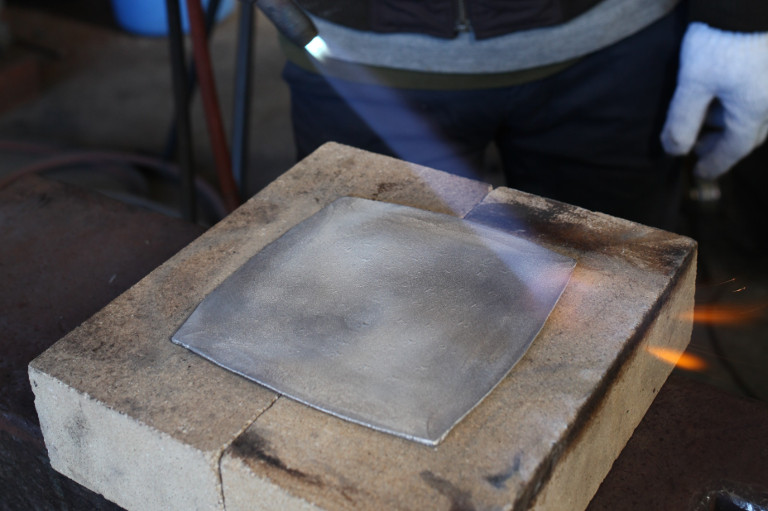
Surprisingly, Tanaka admits to having no particular fondness for making things. His family produces bamboo ware for a living, and growing up in a craft-making environment led him to ponder the question of what he should make at an early age. After working with all sorts of materials, he decided to learn metal forging in high school. Though he enjoyed the work, the question of what he should make with all those techniques he had learned continued to nag at him. He went on to study at a two-year college in Takaoka, a school renowned for its course in metal casting, in the hope of discovering the answer to his question, but graduated without figuring it out. He drifted for a while, choosing to work part-time, chipping concrete with a chisel on building sites, rather than taking a job at a company or working independently as a metal artist. At one point, a master carpenter at the work place strongly encouraged him to study under the renowned iron artist Nobuo Matsuoka. Tanaka ended up working as a live-in apprentice under Matsuoka’s direction for seven years. Guided and aided by others, he has made steady progress, moving forward a step at a time. He says that he is striving to make the most of what he is fortunate enough to have, while constructively pursuing the question of what it means to create things.
Aluminum tableware with the look and feel of ceramic
In addition to his ironwork, Tanaka had long wanted to make everyday metal tableware – nothing so elaborate as fancy silverware, but rather utilitarian metal items for daily use that would be soothing to the touch.
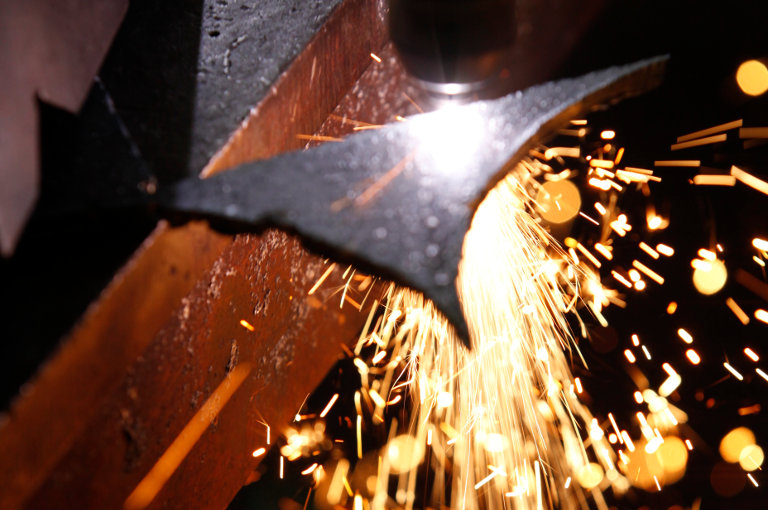
After considerable trial and error, he chose aluminum, a lightweight metal that is highly resistant to corrosion. Though aluminum often is associated with negative attributes like flimsiness and a lack of warmth due to its low thermal conductivity, Tanaka banishes these associations as if by magic. Hammered countless times and fired to a near-melted state on the surface, his aluminum plates attain the warmth and texture of ceramic, and take on lustrous hues that set off foods arranged on them.
The process of creation is long and arduous. He first cuts a piece from a thick aluminum sheet and planes off the rough edges, then applies flame to the edges until they melt and become smooth. Then he begins shaping the piece, first by applying tens of tons of force with a press, and then by carefully hammering it with a hand-held tool. The next step is to polish the surface with a wire brush until it is completely smooth. Only then does he start firing, using a high-temperature blowtorch to bring the surface to a near-melting state, which brings out colors and patterns inherent to each piece.
"The melting point of aluminum is about 660°C. The blowtorch I use for firing my plates can produce flames with temperatures above 3000°C. At these extremely high temperatures, solid aluminum particles begin to unbind and flow freely, creating novel, organic colors and patterns."
The resulting "scenery" is unique to each plate; no two are alike. The firing process forces the metal to endure such an extreme strain that a third of the pieces crumble. Those that survive the brutal process are hammered with a mallet, one by one, into a handsome and user-friendly shape, thus completing the production process.
"It takes a lot of work to make these plates, but I believe they have qualities unique to handmade crafts—fine, intricate details that industrial goods can’t attain. I hammer almost all of my works into existence. In fact, I don’t think I’ve made a piece that hasn’t been hammered. It’s a very direct way to connect with my materials. That immediacy is my ideal, I would say; it’s fundamental to my relationships not only with inanimate objects but also with people."

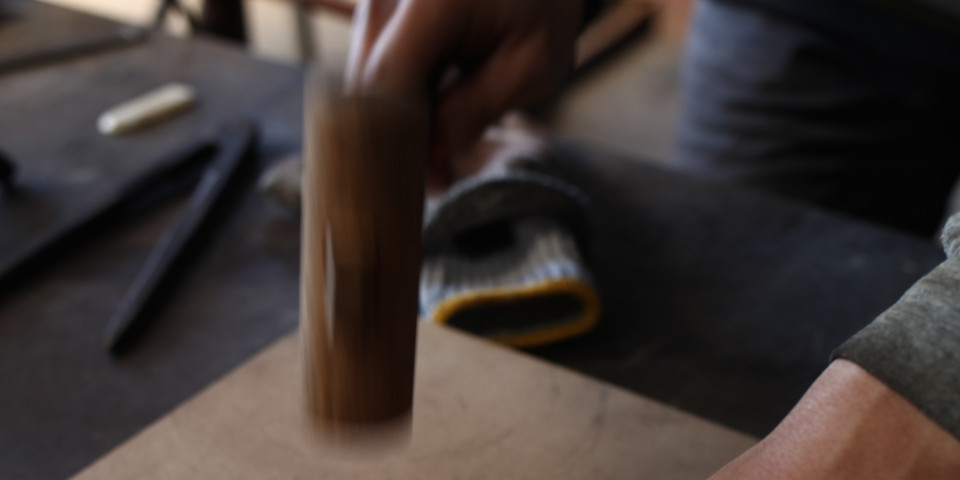
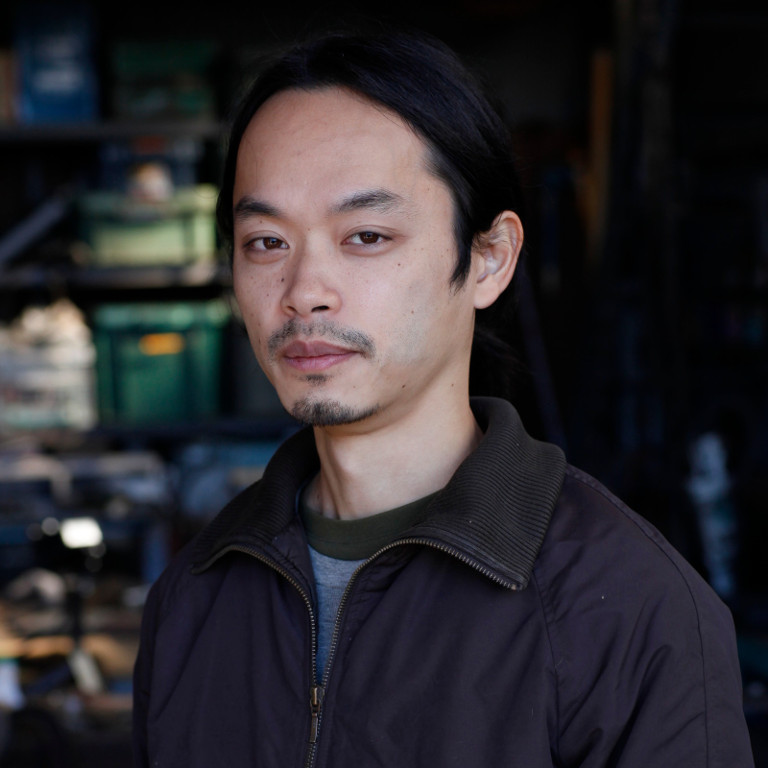
 Metal a la mode (front cover)
Metal a la mode (front cover) 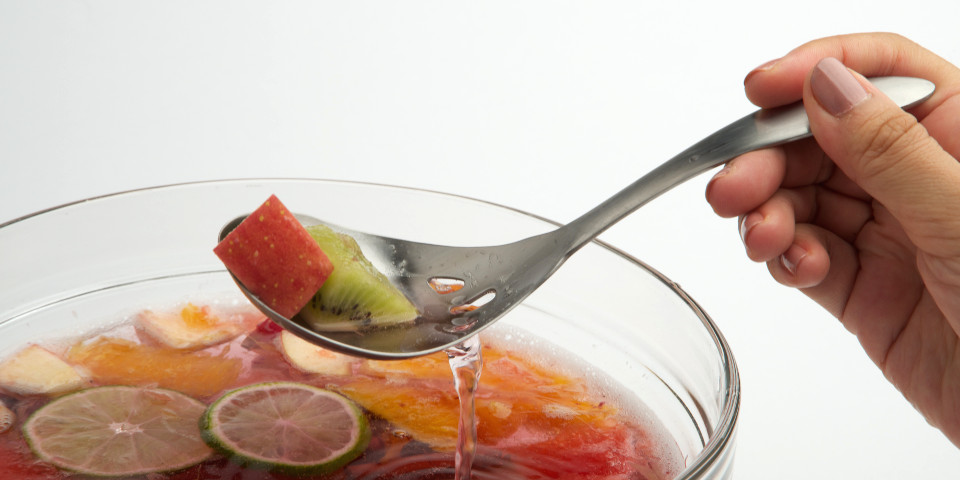 Kitchen Tools from Metalworking Mecca of Tsubame-Sanjo
Kitchen Tools from Metalworking Mecca of Tsubame-Sanjo 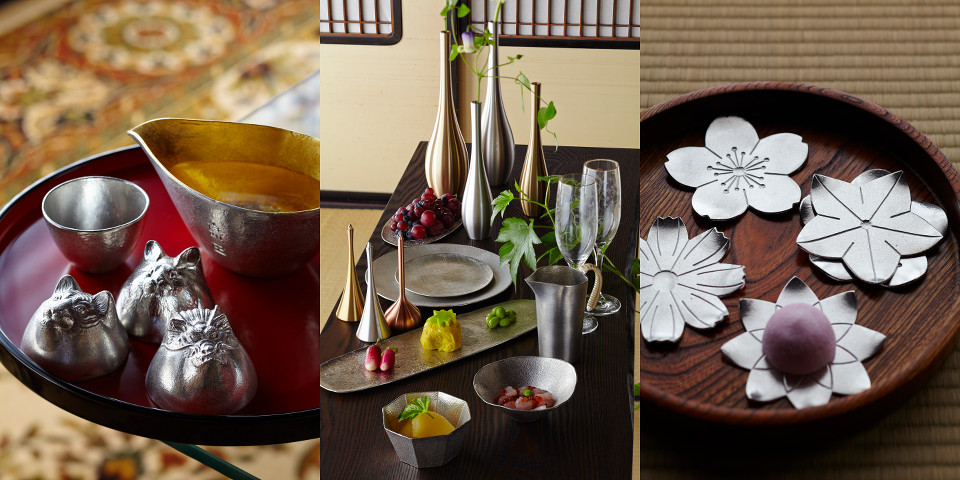 Changing Metal’s Image--Nousaku
Changing Metal’s Image--Nousaku 
